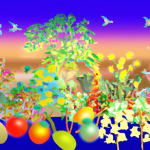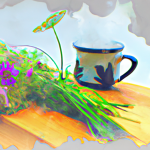
Urban Foraging Tips
Living in an urban environment doesn’t mean you have to miss out on the abundance of nature’s pantry. With a little knowledge and awareness, you can tap into the hidden world of wild edibles right in your own city. In times of uncertainty, being able to find food in unexpected places can be a valuable skill for self-reliance and survival. So, let’s dive into some urban foraging tips to help you gather wild edibles even within the concrete jungle.
1. Know What to Look For
Before you venture out, take the time to educate yourself about the wild edibles that can be found in your area. There are numerous resources available, from field guides to online forums, that can help you identify the plants that are safe to eat. Learn about their characteristics, preferred habitats, and any look-alikes or poisonous plants to avoid. Knowledge is your first line of defense when it comes to foraging safely.
2. Observe and Explore
When wandering through urban spaces, keep a watchful eye on the landscape around you. Parks, abandoned lots, and even cracks in the sidewalk can harbor edible treasures. Pay attention to plants that stand out from the typical cityscape. Look for familiar wild plants like dandelions, chickweed, or plantain, which are often plentiful and easy to identify.
3. Be Mindful of Pollution
Urban environments can be contaminated with pollutants, so it’s important to consider the cleanliness of the plants you gather. Avoid foraging near busy roads, industrial areas, or sites with visible signs of pollution. Plants that grow in cleaner areas, such as rooftops and community gardens, are generally safer options. Additionally, you can rinse the harvested greens thoroughly before consuming them to remove any surface pollutants.
4. Start Small and Gradually Expand
When you’re just starting out with urban foraging, it’s wise to begin with a few widely recognized and easily identified plants. As your confidence and knowledge grow, you can gradually expand your repertoire. Always positively identify each plant before consuming it, and make sure you have a good understanding of its edible parts, as some plants have toxic or inedible parts.
5. Respect Nature and the Law
Urban foraging comes with a responsibility to respect both nature and the law. Never forage on private property without permission, and when foraging in public spaces, adhere to any regulations or restrictions. Take only what you need, and harvest in a sustainable manner to allow for future growth and to preserve the natural balance of the ecosystem.
6. Learn to Preserve
When urban foraging, you might stumble upon an abundance of wild edibles. To make the most of your finds and to extend their shelf life, it’s crucial to learn different preservation techniques. From drying and canning to fermenting and freezing, there are various methods to store and enjoy your foraged treasures throughout the year.
7. Share and Connect
Foraging is not only a means of sustenance but also a way to connect with your community. Join local foraging groups or attend workshops to meet like-minded individuals and expand your knowledge. Sharing experiences and swapping tips can help everyone improve their foraging skills and form valuable connections in times of need.
By embracing the concept of urban foraging, you can tap into a hidden food source that surrounds you every day. Prepare yourself with knowledge, be mindful of cleanliness and pollution, and always respect the laws and nature. Urban foraging is a skill that not only enhances your self-reliance but also allows you to connect with the natural world even in the heart of the city.



GIPHY App Key not set. Please check settings